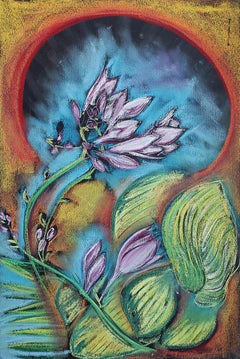Janet Morgan Flowers
2010s Expressionist Landscape Drawings and Watercolors
Archival Paper, Pastel
2010s Expressionist Landscape Drawings and Watercolors
Archival Paper, Pastel
2010s Expressionist Landscape Drawings and Watercolors
Archival Paper, Pastel
Janet Morgan for sale on 1stDibs
A Close Look at expressionist Art
While “expressionist” is used to describe any art that avoids naturalism and instead employs a bold use of flattened forms and intense brushwork, Expressionist art formally describes early-20th-century work from Europe that drew on Symbolism and confronted issues such as urbanization and capitalism. Expressionist artists experimented in paintings and prints with skewed perspectives, abstraction and unconventional, bright colors to portray how isolating and anxious the world felt rather than how it appeared.
Between 1905 and 1920, Austrian and German artists, in particular, were inspired by Postimpressionists such as Paul Gauguin and Vincent van Gogh in their efforts to strive for a new authenticity in their work. In its geometric patterns and decorative details, Expressionist art was also marked by eclectic sources like German and Russian folk art as well as tribal art from Africa and Oceania, which the movement’s practitioners witnessed at museums and world’s fairs.
Groups of artists came together to share and promote the themes now associated with Expressionism, such as Die Brücke (The Bridge) in Dresden, which included Erich Heckel, Ernst Ludwig Kirchner and Karl Schmidt-Rottluff and investigated alienation and the dissolution of society in vivid color. In Munich, Der Blaue Reiter (The Blue Rider), a group led by Wassily Kandinsky and Franz Marc, instilled Expressionism with a search for spiritual truths. In his iconic painting The Scream, prolific Norwegian painter Edvard Munch conveyed emotional turmoil through his depiction of environmental elements, such as the threatening sky.
Expressionism shifted around the outbreak of World War I, with artists using more elements of the grotesque in reaction to the escalation of unrest and violence. Printmaking was especially popular, as it allowed artists to widely disseminate works that grappled with social and political issues amid this time of upheaval. Although the art movement ended with the rise of Nazi Germany, where Expressionist creators were labeled “degenerate,” the radical ideas of these artists would influence Neo-Expressionism that emerged in the late 1970s with painters like Jean-Michel Basquiat and Francesco Clemente.
Find a collection of authentic Expressionist paintings, sculptures, prints and more art on 1stDibs.
Finding the Right landscape-drawings-watercolors for You
Landscape drawings and watercolors show the world through the lenses of different cultures and perspectives. They were also incredibly important for displaying natural scenes before the invention of photography.
There are many ways to effectively arrange art on your walls so that you’re maximizing your wall space. You can introduce peace and serenity within the confines of a living room or bedroom if landscape drawings and watercolors are part of the art that you choose to bring into a space.
Watercolor landscapes have a rich history dating back to ancient China, where they dominated painting genres by the late Tang dynasty. Ink-on-silk paintings in China featured mountains and large bodies of water as far back as the third century. The Netherlands was home to landscapes as a major theme in painting as early as the 1500s, and by the Renaissance, watercolors had made their way to the West and into European culture, becoming a staple of decorative art.
It wasn’t until the Industrial Revolution that watercolor paints became more widely available and embedded in fine arts. Despite their broad distribution today, some artists have chosen to revive the old craft of preparing their own watercolor pigments, paying homage to the medium’s roots.
The variety of brush combinations and painting methods makes watercolor landscapes some of the most stunning pieces in any collection. Find landscape drawings and watercolors on 1stDibs.


